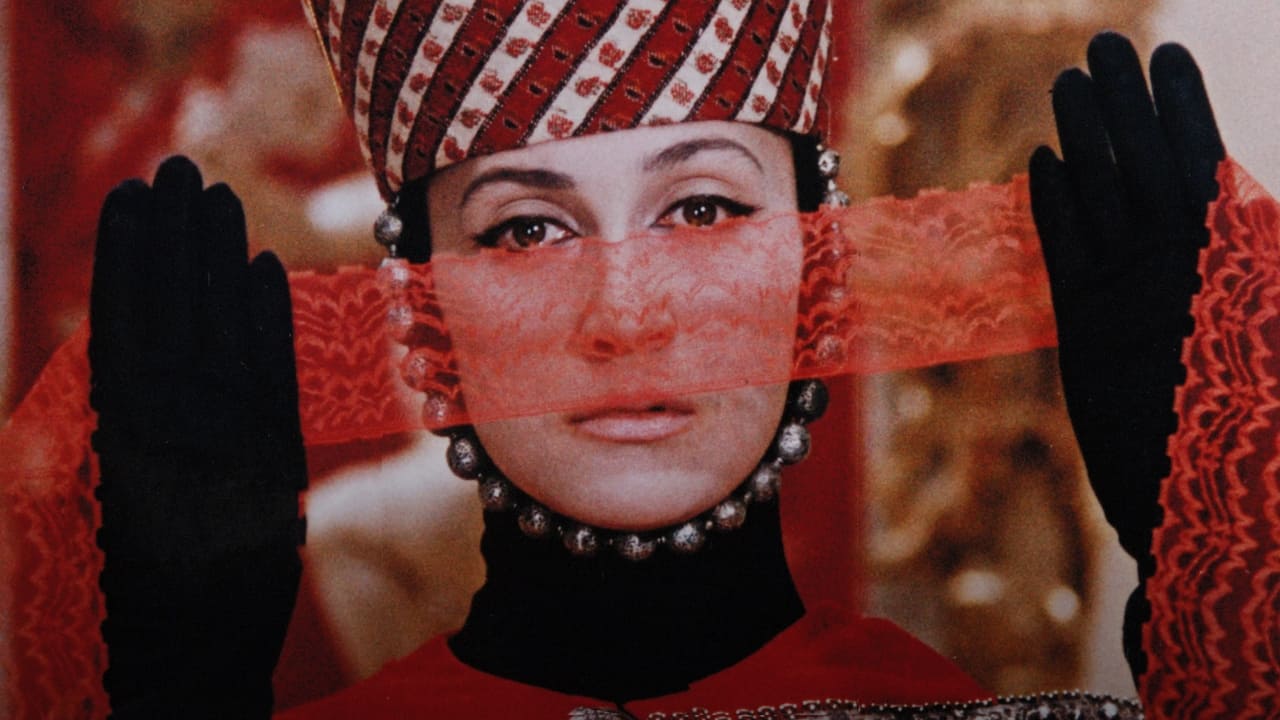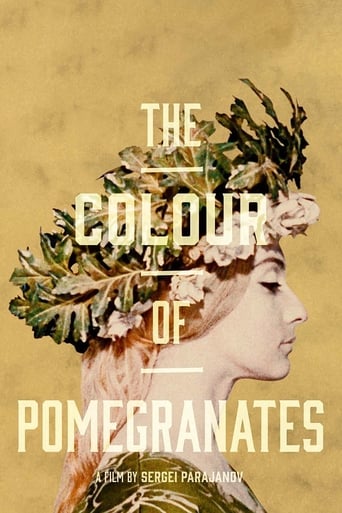

The Color of Pomegranates looks great. Director Sergei Parajanov films textures so they pop out of the screen as much as two dimensional images can. This film's strengths are first and foremost visual. There is not much of a story in a traditional sense, nor is Parajanov interested in providing one. Whether this is a problem depends on whether the individual viewer is receptive to Parajanov's intent. The film follows the life of one man. We begin with this boy as a curious, young man in an Armenian village whose primary business involves mats (dyeing, washing, and hanging them). From there, the boy becomes a young man and joins a group of performers. The young man mimes his roles for an unseen audience. Next, our protagonist is older, in his thirties, and living in a monastery. He does much of the physical work at the monastery, but this viewer remained uncertain if the character was actually a priest. Finally, the man is older still (in his fifties), still residing at the monastery yet remaining distant from the other residents. He mostly wonders around outside, much as he did as an imaginative boy in the film's first section. This man is supposed to be an Armenian poet, but he is never shown writing. However, the film often transitions between sequences with a few poetic lines, which one assumes belong to the protagonist, it is not always clear how the verse applies to the images. That brings up back to the images. The film contains some eye popping ones. My personal favorite is in the first section, when as a boy, the protagonist climbs up to a roof to read a large book. On the roof and the adjourning slanted roofs are dozens of open books apparently drying. The image conjures up something magical about the printed word, books as sacred items. I have watched The Color of Pomegranates twice over a period of seventeen years. I have admired, and liked, it both times, yet I am still not quite converted to its greatness. I don't understand much of the film. This might be on account of my utter ignorance of Armenian history and folklore. Also, I tend to prefer my images in the context of a film with more of a narrative (Eraserhead, Orpheus, Stalker). This second reason may be why I prefer Sergei Parajanov's earlier film Shadows of Our Forgotten Ancestors to this one. Regardless, every film fan should watch The Color of Pomegranates once. I will probably return to the film again at some point. Maybe then I will find the film to be the masterpiece of cinema that I have read.
... View MoreThis is The Movie, especially if you have some background knowledge of Sayat Nova and the Armenian culture. The picture is saturated with art and creative force. I enjoy it every time! IMDb requires six more lines to consider a review as meaningful! IMDb requires five more lines to consider a review as meaningful! IMDb requires four more lines to consider a review as meaningful! IMDb requires three more lines to consider a review as meaningful! IMDb requires two more lines to consider a review as meaningful! IMDb requires one more lines to consider a review as meaningful! Now my review is more meaningful for IMDb!!!
... View MoreThis movie is rather difficult to understand unless you know some background. Those people who don't want to think while watching a movie should not watch this. Some say that there is no plot but if you read about the movie background you will see a plot. My advice is to read about it before watching the movie. Although this film has almost no action, it is very beautiful with many references towards cultural traditions and rituals. It's probably not the movie to watch on a sleepover with your friends, but I recommend watching it when you have time to sit and think. The beginning, I must admit, was rather confusing and therefore boring, but if I had read some background previously, I would have found it more comprehensive. Otherwise, the filming is absolutely fascinating and very beautiful - it's less of a movie than a set of paintings.
... View MoreWhen watching this movie , one has to let loose everything that applies to 'normal'cinema. Just sit , watch and undergo this excellent and magnificent piece of visual art. For me , a Westerner with no knowledge whatsoever of Armenian History/poetry the visuals are very stunning and could have come from another Galaxy for that matter... but what a beauty is presented in this stunning pallet of images ! I know nothing of the Poet who's life is supposedly depicted here , but i don't feel that as a necessity ... Truly original cinema is made here by Paradjanov... A stunning experience is presented to everyone who is able to ' let loose ' and undergo the beauty of this 80-minute wonder ! Be taken by it and be blessed when you saw it ! One of THE most impressive Movies i'v ever watched...a religious experience!
... View More